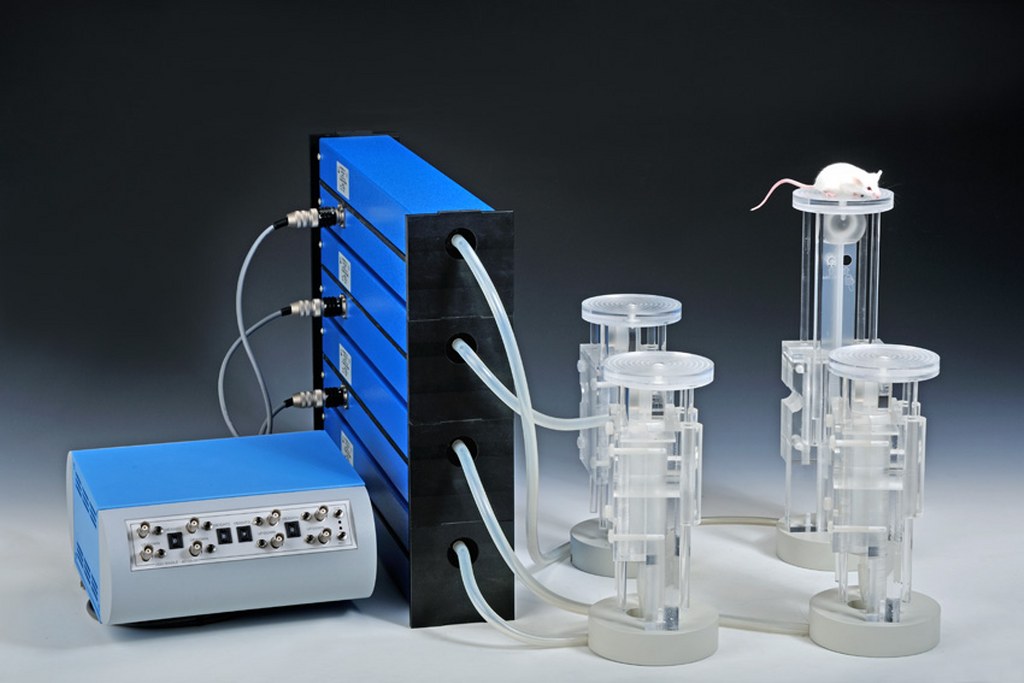產品資訊
產品資訊
水迷宮自動平台 Atlantis Platforms for Water Maze
產品型號: 40100
廠牌名稱: Ugo basile
Ugo Basile所生產的水迷宮平臺由玻璃製成,利用液壓作用實現平臺自動升、降。由於是液壓驅動,水池中將不會出現電流。一個控制單元可同時控制1-4個平臺,因此實驗過程中不需要重新調整平臺位置。
產品特點
- 自由控制升降的4個平台
- 耐用且不易故障的液壓升降系統
- 可使用排程自動升降或是人工設定升降
水迷宮是最常見的學習記憶測試實驗方式之一,多年的發展下也衍生出了許多目的不同的實驗步驟/流程,在某些較特殊的流程中實驗者可能需要更換逃生平台的位置,Ugo Basile出產的Atlantis水迷宮自動平台套組擁有4個可供升降的平台,使用者可以在實驗進行途中任意切換平台並且將其升降,無需使用人工的方式將平台移動並固定,進而避免人類的氣味干擾實驗結果。
The Atlantis System allows a remote control of platforms in a Morris water maze.
The Ugo Basile Atlantis Platforms can be lifted and lowered automatically by hydraulic force. They are made of clear Perspex, so hardly visible when immersed in the water tank and being operated solely by hydraulic force, no electricity is present inside the pool.
All the electrical parts of the mechanism are safely located outside the pool.
Despite the efficacy of the Morris Water Maze task, the test carried out with standard platforms has some limitations, relating to the fact that the platforms normally used have fixed height and cannot be raised during probe tests. Moreover, moving the platform always requires interrupting a trial and starting a new one. Probe tests run with the use of a lift platform give more reliable indications on the presence of true spatial learning.
Our Atlantis system makes it possible to lift the platform with the test in progress: moreover, as up to 4 platforms are driven by the same controller (or by PC), the platforms do not need to be repositioned within the pool in the course of the experiment: they can simply be positioned in the different pool quarters and lifted when necessary. Unique to our system, both platform lifting and collapsing is controlled automatically. No more hands in the water!
When used as stand-alone tool, without motor/controller, the Atlantis hydraulic plat-form 40101-002 can also conveniently replace standard fixed platforms.
All our Morris Water Maze tanks are provided with suitable connectors to attach up to 4 platforms.
產品規格
| General | |
| Number of channels | 4, independent |
| Operating Modes | Manual or TTL |
| Controls | Via control unit and/or software |
| Platform vertical range | 25-35cm |
| Platform vertical travel | 10cm |
| Platform speed | 10mm/second |
| Platform diameter | 10cm |
| Power | 80V/240Vac, 50/60 Hz |
| Operating Temperature | 10° to 40°C |
| Sound Level | Negligible |
| Pollution Degree | ≤ 2 |
| Physical | |
| Weight |
11Kg 1-platform 30Kg 4-platforms |
| Shipping Weight |
17Kg 1-platform 39Kg 4-platforms |
| Packing |
80x60x44cm 80x60x44cm x 2 (40400) |
應用領域
As described in the paper “The Atlantis Platform: A New Design and Further Developments of Buresova's On-demand Platform for the Water Maze” by R.I.W. Spooner et alia, in the widely used spatial learning task of the water maze is a (Morris 1981, 1984) rats (or mice) will rapidly learn to take relatively direct paths to the platform, indicating that they may have learned its spatial location.
Transfer tests, sometimes called probe tests, in which the platform is removed from the pool, offer further evidence of true spatial learning, as trained animals display a search pattern focusing on the platform location in the training quadrant.
For this reason, and despite its efficacy, the water maze task has some limitations: animals may develop strategies for finding the platform, such as circling at roughly the appropriate distance from the sidewall, which do not actually require them to learn where the platform is located, hence leading to falsely interpreted spatial learning.
To overcome these limits, the Atlantis platform was designed by Buresova et al. (1985) and validated in the above mentioned paper, proving that the platform is highly (100%) reliable and showing significantly improved localization of rats trained to the Atlantis platform compared with those trained to the regular hidden platform.
The Platform gradual rise to a position just below the water surface causes minimal behavioral disruption. The rats treat it as an escape platform in exactly the same way as the regular platform.




